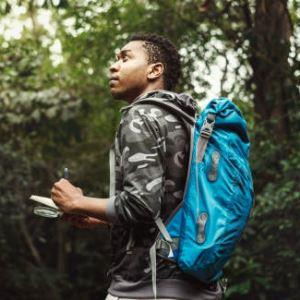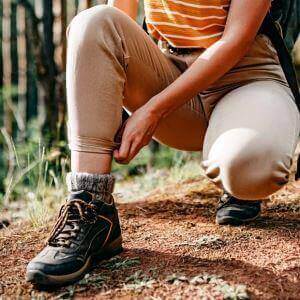Kenya is a land of striking contrasts, from the savannah plains of Maasai Mara to the lush highlands of Mount Kenya. Yet, one of its most overlooked wonders is Lake Logipi, an ethereal saline lake nestled deep in the Great Rift Valley. This remote and unspoiled destination provides an unforgettable experience for American tourists seeking an off-the-beaten-path adventure. Known for its shimmering pink hues, thanks to thousands of flamingos, and the rugged volcanic formations that frame its shores, Lake Logipi is a hidden gem that captivates those who venture into its isolated landscapes. Located south of the Suguta Valley, Lake Logipi receives its water from underground saline hot springs and seasonal floodwaters from the Suguta River. Unlike other more famous lakes in Kenya, such as Lake Nakuru or Lake Naivasha, Logipi remains largely untouched by mass tourism, making it a serene and exclusive destination. Visitors are met with an unfiltered, wild experience, one where nature dictates the rhythm and silence dominates, except for the occasional call of birds and the whisper of the wind through the desert-like terrain. For American travelers who seek authentic, immersive experiences, Lake Logipi offers an unmatched opportunity. Whether you are a photographer capturing the flamingo-filled shores at sunrise, an adventurer navigating the rugged landscapes, or a nature lover appreciating the thriving birdlife, this destination promises a sense of wonder. It also provides insight into the region’s indigenous cultures, as visitors can engage with the resilient Turkana and Samburu communities that have thrived in these harsh conditions for centuries. A visit to Lake Logipi is not just about witnessing breathtaking scenery, it’s about embracing a rare, raw connection with nature. For American tourists looking for something beyond the traditional safari, this remote haven is a must-visit, offering a unique slice of Kenya’s untouched beauty.
Why American Tourists Should Visit Lake Logipi
 Lake Logipi offers a unique and untouched safari experience, making it an ideal destination for American travelers seeking activities beyond the typical Kenyan safari. Unlike the famous Maasai Mara or Amboseli, this hidden gem remains relatively undiscovered, ensuring a more peaceful and personal adventure. Visitors can enjoy the serenity of nature without large tourist crowds, making it a perfect getaway for those who appreciate exclusivity. The lake’s high salinity levels support massive populations of cyanobacteria, which in turn attract thousands of flamingos that feed on them. The pink spectacle of flamingos covering the lake’s surface is one of the most captivating sights in Kenya. The surrounding rocky cliffs and dormant volcanoes further enhance the scenery, creating a dramatic contrast with the lake’s reflective waters. Another remarkable feature of Lake Logipi is its hot springs, which continuously feed the lake, maintaining its water levels even in the driest months. These natural geothermal pools are an essential part of the lake’s ecosystem, sustaining wildlife and bird populations year-round. The lake’s remoteness makes it a haven for bird species that rely on unspoiled breeding grounds, further adding to its ecological importance. A visit to Lake Logipi also enhances a Kenyan safari itinerary by adding diversity to the experience. While savannahs and forests dominate other popular wildlife destinations, Logipi’s rugged volcanic terrain, saline waters, and dramatic landscapes provide an entirely different backdrop. This unique setting attracts adventure travelers who are drawn to off-the-beaten-path locations. Its remoteness and challenging terrain make it an excellent choice for those who enjoy exploration, discovery, and an authentic connection with nature. For photography enthusiasts, Lake Logipi is a dream destination. The stunning contrast between its blue saline waters, the thousands of pink flamingos, and the towering volcanic cliffs offers some of Kenya’s most striking imagery. The lake’s reflective surface, especially during sunrise and sunset, creates breathtaking visuals that are unmatched anywhere else in the country. Whether capturing the vibrant birdlife, the surreal landscapes, or the golden hues of the African sky, photographers will find endless opportunities for exceptional shots. For American tourists looking to go beyond traditional game drives and experience Kenya’s raw and untouched beauty, Lake Logipi is a must-visit. Its tranquility, adventurous appeal, and unmatched visual splendor make it a truly special addition to any safari adventure.
Lake Logipi offers a unique and untouched safari experience, making it an ideal destination for American travelers seeking activities beyond the typical Kenyan safari. Unlike the famous Maasai Mara or Amboseli, this hidden gem remains relatively undiscovered, ensuring a more peaceful and personal adventure. Visitors can enjoy the serenity of nature without large tourist crowds, making it a perfect getaway for those who appreciate exclusivity. The lake’s high salinity levels support massive populations of cyanobacteria, which in turn attract thousands of flamingos that feed on them. The pink spectacle of flamingos covering the lake’s surface is one of the most captivating sights in Kenya. The surrounding rocky cliffs and dormant volcanoes further enhance the scenery, creating a dramatic contrast with the lake’s reflective waters. Another remarkable feature of Lake Logipi is its hot springs, which continuously feed the lake, maintaining its water levels even in the driest months. These natural geothermal pools are an essential part of the lake’s ecosystem, sustaining wildlife and bird populations year-round. The lake’s remoteness makes it a haven for bird species that rely on unspoiled breeding grounds, further adding to its ecological importance. A visit to Lake Logipi also enhances a Kenyan safari itinerary by adding diversity to the experience. While savannahs and forests dominate other popular wildlife destinations, Logipi’s rugged volcanic terrain, saline waters, and dramatic landscapes provide an entirely different backdrop. This unique setting attracts adventure travelers who are drawn to off-the-beaten-path locations. Its remoteness and challenging terrain make it an excellent choice for those who enjoy exploration, discovery, and an authentic connection with nature. For photography enthusiasts, Lake Logipi is a dream destination. The stunning contrast between its blue saline waters, the thousands of pink flamingos, and the towering volcanic cliffs offers some of Kenya’s most striking imagery. The lake’s reflective surface, especially during sunrise and sunset, creates breathtaking visuals that are unmatched anywhere else in the country. Whether capturing the vibrant birdlife, the surreal landscapes, or the golden hues of the African sky, photographers will find endless opportunities for exceptional shots. For American tourists looking to go beyond traditional game drives and experience Kenya’s raw and untouched beauty, Lake Logipi is a must-visit. Its tranquility, adventurous appeal, and unmatched visual splendor make it a truly special addition to any safari adventure.
What Wildlife Can You See at Lake Logipi?
Lake Logipi is an essential ecological hub in Kenya’s Great Rift Valley, offering a pristine sanctuary for a variety of wildlife. The lake’s saline waters and mineral-rich environment create the perfect breeding ground for an abundance of bird species, making it a birdwatcher’s paradise. Unlike traditional game reserves teeming with large mammals, Lake Logipi provides a unique opportunity to observe a different side of Kenya’s wildlife one that thrives in extreme and remote landscapes. As visitors approach the lake, the first striking sight is the vibrant pink hue created by thousands of flamingos that migrate to Logipi to feed on the cyanobacteria flourishing in its waters. This spectacle, enhanced by the lake’s mirror-like surface, offers one of Africa’s most iconic and mesmerizing views. In addition to flamingos, Lake Logipi is a refuge for various migratory birds such as pelicans, cormorants, and herons, all of which depend on its rich ecosystem. The surrounding arid terrain supports a surprising array of wildlife adapted to the harsh environment. Scavengers such as hyenas and jackals patrol the edges of the lake, seeking opportunities to prey on weaker animals or feast on carrion. Occasionally, oryx and gerenuks can be spotted navigating the rocky landscapes, their bodies perfectly adapted to the desert-like conditions. The lake’s warm, mineral-laden waters also support reptiles like Nile monitors, which can often be seen basking along the shore. One of the most fascinating aspects of Lake Logipi is its role in the balance between wildlife and Indigenous communities. Herders from the Turkana and Samburu tribes graze their livestock near the lake’s periphery, demonstrating a long-standing tradition of coexistence between humans and wildlife. This dynamic adds a cultural depth to the safari experience, visiting Lake Logipi is more than just a wildlife excursion it becomes an exploration of the harmony between nature and people in one of Kenya’s most remote regions. The following are the wildlife you may see:
-
Flamingos: Lake Logipi is a major breeding ground for thousands of lesser flamingos, which create stunning pink reflections on the water. These birds migrate between Lake Bogoria, Lake Nakuru, and Lake Logipi, depending on seasonal changes.
-
Pelicans and Waterbirds: In addition to flamingos, pelicans, cormorants, grebes, and other migratory birds frequent the lake, making it a paradise for birdwatchers.
-
Hyenas and Jackals: The surrounding landscapes are home to scavengers that roam the edges of the lake in search of food, adding a dynamic layer to the area’s ecosystem.
-
Rare Mammals: Occasionally, oryx, gerenuks, and even the elusive striped hyena are seen navigating the arid terrain. While not as densely populated with large mammals as other Kenyan parks, the region’s wildlife has adapted to the harsh environment.
-
Reptiles and Amphibians: The saline nature of the lake means fewer fish, but Nile monitors and amphibians can still be found along its shores.
How to Get to Lake Logipi
Reaching Lake Logipi requires careful planning due to its remote location, nestled deep within Kenya’s Great Rift Valley. The journey to this hidden gem is an adventure in itself, offering travelers breathtaking landscapes and an unparalleled sense of remoteness. Unlike more accessible Kenyan destinations such as Maasai Mara or Amboseli, reaching Logipi involves traversing rugged terrains, arid desert landscapes, and volcanic formations. However, the effort is well worth it for those who seek an unspoiled natural wonder free from mass tourism. The most convenient options to reach Lake Logipi include:
-
By Air: Chartered flights from Nairobi or other major cities offer aerial views of the lake and its stunning surroundings. Many tourists opt for affordable helicopter safaris to fully appreciate the dramatic landscape.
-
By Road: A 4x4 safari journey through the Chalbi Desert or via Lake Turkana provides an adventurous off-road experience. Travelers should be prepared for long driving hours and rough terrain.
-
Guided Tours: Homejoy Safari Adventures offers well-organized trips that include expert guides, ensuring travelers experience the best of Lake Logipi safely and comfortably.
What are the Best Activities at Lake Logipi
Lake Logipi offers a wide range of unique activities for American travelers who want to experience the untouched beauty of Kenya’s Great Rift Valley. From remarkable birdwatching opportunities to cultural immersions and adventure-filled excursions, the lake is a haven for explorers, photographers, and nature lovers alike. Its remote location and otherworldly landscapes provide an unparalleled safari experience, away from the usual crowds found in Kenya’s more famous wildlife reserves. One of the most remarkable aspects of Lake Logipi is the sheer number of flamingos that migrate here, creating an ever-changing pink landscape on the water. The lake’s saline environment attracts thousands of these birds, making it a prime destination for birdwatching and wildlife photography. The presence of volcanic formations, hot springs, and salt flats adds to its mystique, offering travelers dramatic scenery that is perfect for exploration and adventure. Beyond the natural beauty, Lake Logipi provides visitors with the opportunity to engage with local communities. The Turkana and Samburu people have lived in this arid region for generations, adapting to the harsh conditions with resilience and deep cultural traditions. Meeting these communities offers an enriching experience that goes beyond sightseeing, it allows visitors to understand the delicate balance between human life and nature in one of Africa’s most challenging environments. For those looking for a truly off-the-grid experience, Lake Logipi offers solitude, untouched landscapes, and a sense of raw wilderness that is increasingly rare in today’s world. Whether you are drawn by the promise of stunning photography, cultural encounters, or the thrill of discovering a hidden gem, the activities at Lake Logipi promise an unforgettable adventure:
-
Birdwatching: Witness thousands of flamingos and other migratory birds in their natural habitat. The lake serves as a critical breeding and feeding ground for many avian species.
-
Photography: Capture the unique reflections of the lake, set against the dramatic backdrop of volcanic landscapes. The ever-changing light conditions make it a dream destination for professional and amateur photographers alike.
-
Cultural Tours: Engage with local Turkana and visit Samburu communities to learn about their traditional way of life, including their pastoralist customs and rich folklore.
-
Scenic Flights: Enjoy breathtaking aerial views of the lake and its surroundings. Helicopter safaris provide an unforgettable perspective of the Great Rift Valley’s geological wonders.
-
Exploring the Hot Springs: These geothermal features provide insight into the lake’s unique ecosystem and the geological activity that shaped the region.
Discover the Travel Tips for Visiting Lake Logipi
Planning a trip to Lake Logipi requires careful preparation, as its remote location presents unique challenges and rewards. Unlike mainstream safari destinations, Logipi offers an untamed wilderness experience, requiring visitors to be well-equipped for the journey. The lake’s breathtaking scenery, abundant birdlife, and dramatic volcanic landscapes make it a must-visit for adventure travelers seeking an off-the-beaten-path safari. Due to its arid climate, it is essential to visit during the right season to fully appreciate the experience. The dry months between July and October, as well as January to March, offer the best conditions for photography, birdwatching, and travel accessibility. During these months, the lake’s waters reflect the vibrant pink hues of thousands of flamingos, creating stunning photo opportunities. Visitors should pack accordingly for the journey. Essentials include sun protection such as hats, sunglasses, and sunscreen, as well as a high-quality camera and binoculars for wildlife observation. Since the area lacks modern amenities, carrying sufficient drinking water, snacks, and lightweight, moisture-wicking clothing is highly recommended. Sturdy hiking boots are essential for exploring the rocky terrain around the lake. Accommodation near Lake Logipi is limited, with most travelers choosing to stay in lodges near Lake Turkana or opting for private safari camps. For a seamless experience, booking a guided safari is highly recommended. Homejoy Safari Adventures offers expert-led expeditions, ensuring that visitors navigate the challenging terrain safely while making the most of their visit. For travelers looking to experience one of Kenya’s most unique landscapes, Lake Logipi offers an unparalleled adventure. Whether for photography, cultural exploration, or simply escaping into the wild, careful planning and the right guidance will make the journey truly unforgettable.
Highlights of travel tips:
-
Best Time to Visit: The dry seasons (July to October and January to March) provide optimal conditions for wildlife viewing and photography.
-
Essential Gear: Bring binoculars, a high-quality camera, sun protection, sturdy hiking boots, and enough water for the journey.
-
Accommodation Options: Lodging near Lake Turkana or private safari camps in the surrounding areas offer comfortable stays for visitors who wish to explore the region in depth.
-
Guided Safaris: To maximize your experience, consider booking with Homejoy Safari Adventures, which offers customized trips with expert guidance and ensures a seamless, well-planned journey.
Lake Logipi remains one of Kenya’s most captivating and underexplored destinations, making it a must-visit for American travelers looking for an extraordinary safari experience. Plan your adventure today and witness the untouched beauty of Kenya’s hidden gems.
Frequently Asked Questions (FAQs) About Lake Logipi
1. What makes Lake Logipi unique compared to other lakes in Kenya? Lake Logipi stands out due to its remote location, high salinity, and vibrant flamingo population. Unlike more accessible lakes like Nakuru or Naivasha, Logipi remains largely untouched by commercial tourism, offering a raw and authentic experience in the Great Rift Valley.
2. How do I get to Lake Logipi from Nairobi? Traveling to Lake Logipi requires careful planning. The most common options are:
-
By Air: Chartered flights offer the quickest and most scenic way to access the lake.
-
By Road: A 4x4 vehicle is necessary for an overland journey, often passing through the Chalbi Desert or Lake Turkana region.
-
Guided Safari Tours: Homejoy Safari Adventures provides expert-led trips ensuring a seamless travel experience.
3. When is the best time to visit Lake Logipi? The best months to visit are during the dry seasons, from July to October and January to March, when weather conditions are ideal for travel and wildlife viewing.
4. What kind of wildlife can I see at Lake Logipi?
-
Flamingos: Thousands of lesser flamingos feed on the algae-rich waters, creating a mesmerizing pink spectacle.
-
Pelicans and Waterbirds: The lake attracts numerous migratory bird species.
-
Hyenas and Jackals: These scavengers can be spotted roaming the edges of the lake.
-
Rare Mammals: Occasionally, oryx and gerenuks can be seen navigating the arid terrain.
5. What activities can tourists enjoy at Lake Logipi?
-
Birdwatching: A paradise for ornithologists and wildlife photographers.
-
Photography: Capture the lake’s mirror-like reflections, volcanic formations, and flamingo colonies.
-
Scenic Flights: Experience breathtaking aerial views on a helicopter or chartered flight.
-
Cultural Encounters: Visit local Turkana and Samburu communities to learn about their traditions and way of life.
6. Is Lake Logipi safe for tourists? Yes, Lake Logipi is safe to visit with proper planning. Due to its remote nature, traveling with an experienced guide is recommended. Homejoy Safari Adventures ensures safety and comfort on all organized trips.
7. What should I pack for a trip to Lake Logipi?
-
Sun protection: Sunscreen, sunglasses, and a wide-brimmed hat.
-
Camera and binoculars for wildlife viewing.
-
Lightweight, breathable clothing and sturdy hiking boots.
-
Sufficient drinking water and snacks for long travel distances.
8. Can I combine a visit to Lake Logipi with other safari destinations in Kenya? Absolutely! Many travelers combine their visit with Lake Turkana, Samburu National Reserve, or the Chalbi Desert for a more diverse Kenyan safari experience.
9. Why should American tourists choose Lake Logipi over more popular destinations? Lake Logipi offers an unparalleled off-the-grid experience, free from crowds and commercialization. It provides a true sense of adventure, stunning landscapes, and wildlife encounters in a setting that feels untouched by time.
10. How can I book a guided tour of Lake Logipi? To ensure a seamless experience, book with Homejoy Safari Adventures, which offers tailor-made tours, expert guides, and well-planned itineraries for a hassle-free adventure.






